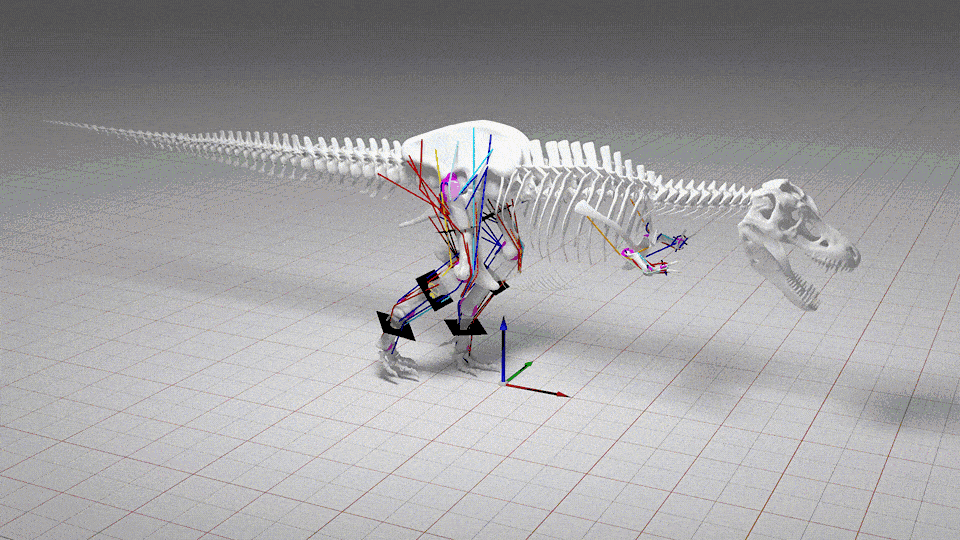When you purchase through links on our site , we may earn an affiliate commission . Here ’s how it play .
A fogy attributed to a teensy , feathered dinosaur may not be a dinosaur at all , but rather a … lizard , according to novel research . With the new literary criticism , the March work — entitle " Hummingbird - sized dinosaur from the Cretaceous period of Myanmar " was retracted yesterday ( July 22 ) from the journalNaturewhere it had been publish , fit in to a statement in the daybook .
The creature ’s 99 million - year - old skull was inhume in amber when scientist identify it in a mine in Myanmar ( formerly Burma ) , and while the puppet was somewhat of a weirdo with its doll - like head teacher and rough 100 tiptop - sharp teeth , researchers concluded this was likely the smallest dinosaur ever ground . ( It in all probability weighed just 0.07 ounces ( 2 gm ) , the weight of two dollar bills , Live Science previously cover . )

Researchers initially thought this skull belonged to a bird-like dinosaur. Now, evidence suggests that it’s the head of a lizard.
Whether the animal ( Oculudentavis khaungraae ) was a bird - like dinosaur or a lizard , that does n’t negate the determination ’s importance , the study ’s scientists say . " It ’s just a really weird animal and an important uncovering regardless of whether it ’s a weird bird or a weird lizard with a bird head , " study co - lead researcher Jingmai O’Connor , a fourth-year professor of vertebrate paleontology at the Chinese Academy of Sciences , told Live Science in an electronic mail .
Related : Photos : Hatchling preserve in amber
One study posted onbioRxiv , a preprint database where study are “ bring out " before they undergo recapitulation by scientific discipline equal , postulate that the specimen is a lizard . In this young study , Zhiheng Li , from the Institute of Vertebrate Paleontology and Paleoanthropology at the Chinese Academy of Sciences , and colleagues looked back through the computed tomography ( CT ) scan of the small animate being . They receive several features of the fauna that contradicted the idea of a bird - like dinosaur and said that it align much better with lizard trait . These include features of the fauna ’s lizard - like teeth and the features on its fenestra , or the openings in the skull behind the eye socket that are incur in animals such as dinosaur and lizard .

A CT (computed tomography) scan of Oculudentavis khaungraae’s skull. It even appears that the creatures’s tongue is preserved, the researchers said.
O’Connor and her colleagues posted their response , also onbioRxiv , saying that while they " welcome any new interpretation or alternative supposition , " of the animate being , this new research " failed to provide conclusive grounds for the reidentification . " However , O’Connor did tell Live Science that " I do think we were untimely and thatOculudentavisis a lizard , not a razzing — you just ca n’t prove it unequivocally with the available evidence . "
So , the jury is still out on the fauna ’s true identity element . Another team of investigator ( different from the bioRxiv mathematical group ) is study a different specimen of the same species , but they have yet to print their findings . If the creature is , in fact , a lizard , the fogey could stand for a " new and strange instance ofconvergent evolutionbetween widely disparate reptile group , " O’Connor said . ( Convergent organic evolution happens when two organisms that are not close related develop similar traits . In this font , the creature had a bird - like mind . )
— Photos : Dinosaur - geological era doll sport ribbon - like feathers

— Sauromalus obesus photos : Meet this with child , desert - live lizard
— In photos : Flashy collared lizard of the North American deserts
O’Connor noted that she had tested whether the specimen was a wench or a lounge lizard in a phyletic , or class tree , analysis , that included several fogey chick . " As long as any other shuttlecock were include in the analysis , Oculudentaviswas resolved as a bird , " O’Connor said . " remotion of all Bronx cheer made it resolve as a lizard but also cause major reptile clades to collapse , showing just how weird the specimen is . "

In addition , O’Connor said that Burmese amber is jazz to continue hummingbird - size birds that go during theCretaceous period(145 million to 65 million years ago ) in what is now Myanmar . However , it ’s possible this creature was n’t among them , she allege .
The Society of Vertebrate Paleontology ( SVP)published a varsity letter in April(a month after the original Nature study come out ) asking that its phallus refrain from using Burmese amber collect in or exported from Myanmar since June 2017 , because profits earned from selling this amber might fire the country ’s decades - long civil war , according to a 2019 small-arm write inScience magazine . However , the piece that O’Connor and her colleagues prove was find oneself in 2016 .
to begin with published on Live Science .













